Exxon Valdez Runs Aground in 1989
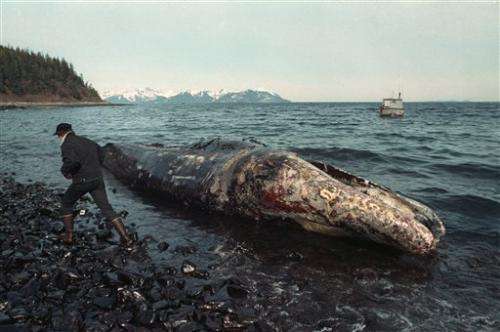
Early on March 24, 1989, Dean Fosdick, the Alaska bureau chief of The Associated Press, was awakened around 5:30 a.m. by a phone call. The caller had a tip that a tanker had run aground outside Valdez.
Fosdick quickly confirmed with a top Coast Guard official that the Exxon Valdez had struck a reef and was leaking thick, toxic crude oil into Prince William Sound, and sent out first word to the world of what at the time was the nation's worst-ever oil spill.
The AP dispatched more than a dozen reporters, photographers and editors to cover the disaster. For a generation of people, the stories and the images of fouled coastline, of sea otters, herring and birds soaked in oil, of workers painstakingly washing crude off the rugged shoreline, became seared in their memories.
Twenty five years after their original publication, the AP is making this report, by Susan Gallagher, and images, taken by Jack Smith and John Gaps III:
GROUNDED TANKER SPILLS 270,000 BARRELS OF OIL OFF ALASKA
A tanker ran aground on a reef and ripped holes in its hull Friday, gushing millions of gallons of thick crude oil into pristine Prince William Sound in the largest spill in U.S. history.
The Exxon Valdez, a 987-foot (300-meter) tanker owned by Exxon Shipping Co. Inc., struck Bligh Reef about 25 miles (40 kilometers) from Valdez, the northernmost ice-free port in the United States, spilling an estimated 270,000 barrels or 11.3 million gallons (43 million liters) of oil into the Pacific Ocean, the Coast Guard said.
Early Friday the tanker was losing 20,000 gallons (75,700 million liters) of oil per hour, but the outflow slowed to a trickle later Friday. An oil slick snaked about five miles from the ship as wind and tide pushed the crude oil into the sound and away from shore.
"This is the largest oil spill in U.S. history and it unfortunately took place in an enclosed water body with numerous islands, channels, bays and fiords," said Richard Golob, publisher of the Golob Oil Pollution Bulletin.
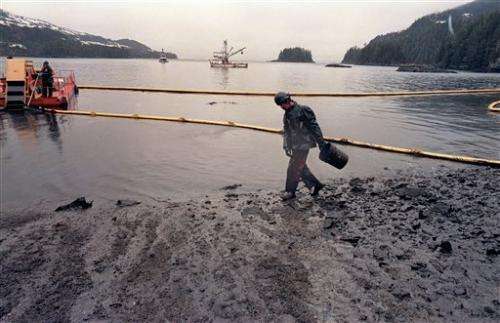
The Alaska Department of Environmental Conservation said three tanks on the ship's right side and five tanks along the centerline were punctured. The tanks on the left side appeared intact, the agency said.
Exxon was bringing in three planeloads of cleanup crews from around the world.
"A spill of this size in such a complex environment promises to be a cleanup nightmare," said Golob, a Cambridge, Massachusetts-based consultant whose firm has studied oil spills and environmental disasters for 15 years.
"There's no way for the oil to go out to sea without passing through narrow channels," he said by telephone from Cambridge. "As a result a large shoreline area will most likely be polluted and undoubtedly the cleanup will be very extensive and labor intensive."
In Washington, Interior Department spokesman Steve Goldstein said efforts had begun to evacuate waterfowl, sea otters and other wildlife from the danger area. "Obviously some of the waterfowl have already died," he said.
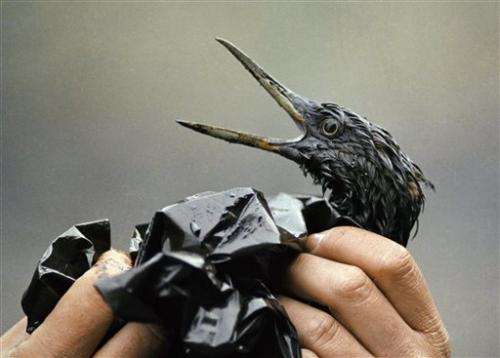
The vessel had loaded 1.26 million barrels of oil at the Alyeska Pipeline Service Co. marine terminal at Valdez and left late Thursday for Long Beach, California.
The terminal was closed to tanker traffic early Friday while officials tried to deal with the spill. The Federal Aviation Administration closed airspace for six miles around the tanker to keep sightseers at bay.
Officials cut the flow in the trans-Alaska oil pipeline to 800,000 barrels daily from 1.2 million barrels, which would let the terminal operate for nine days before the line has to shut down, said Alyeska spokesman Tom Brennan.
Coast Guard Petty Officer John Gonzales said the tanker's captain was experienced and may have been maneuvering to avoid icebergs from Columbia Glacier when the vessel ran aground. Two Coast Guard investigators went aboard the tanker, he said.
"The rock they hit is definitely not in tanker lanes," said Coast Guard Lt. Greg Stewart in Juneau. He said the reef is about 1 1/2 miles (two kilometers) outside normal lanes.
Gonzales said employees of the Alyeska Pipeline Service Co., which operates the trans-Alaska oil pipeline for a consortium of oil companies, were working to contain the oil with floating booms.
Don Cornett, Alaska coordinator for Exxon USA, said about two dozen people were aboard the Exxon Valdez. There were no immediate reports of injuries.
Gov. Steve Cowper arrived in Valdez on Friday to evaluate the spill. He said state officials were considering the use of chemicals to disperse and sink the oil.
"The problem is that chemical use can have a bad effect on marine life," he said. "It's going to be a tough judgment call."
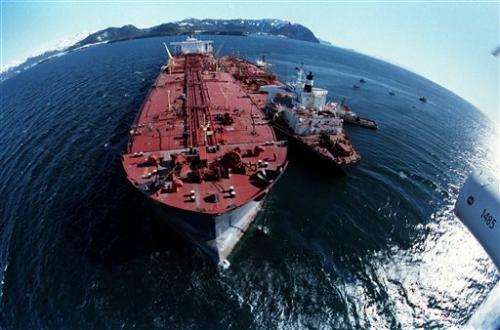
Cowper said conventional responses, such as booms, probably would not work because the spill is so large. "You probably couldn't do it (contain the spill) with all the equipment available in North America. This is a major spill by any reckoning.
"We've been able to brag for a long time that there's never been a major oil spill in Valdez Harbor. Now, we can't do that anymore."
The Alaska Department of Fish and Game called an emergency meeting to discuss the potential effect on marine mammals and birds in the sound.
In addition to the terminal, the picturesque community of about 3,000 year-round residents about 125 miles (200 million kilometers) east of Anchorage relies on the fishing and tourism industries. The sound is a playground for kayakers, sport fishermen and tourists.
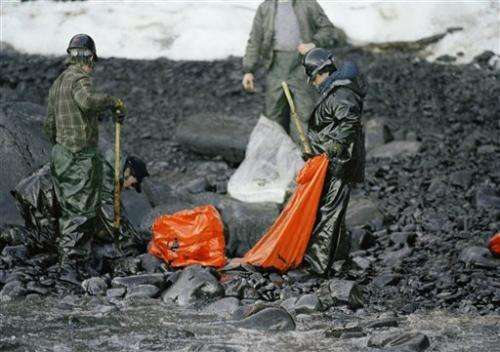
Exxon's Cornett said his company was bringing three planeloads of oil spill response workers from all over the world to deal with the mess. He said the company hoped to pump the oil remaining aboard the grounded vessel onto another ship, refloat the Exxon Valdez and clean up the oil.
"I haven't the foggiest idea what it will cost," he said. "It won't be cheap."
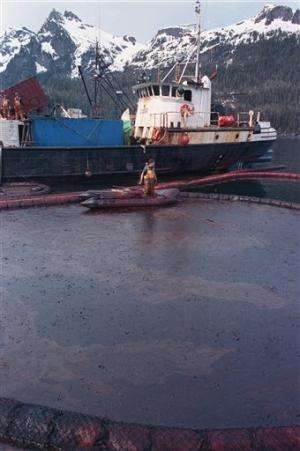
Jason Wells, executive director of the Valdez Fisheries Development Association, said he believed the oil slick would cause little damage unless wind pushes it back toward Valdez. The fishing industry is between seasons.
Wells said the black cod fishery is scheduled to begin April 1, but the region's major herring fishery is not expected to get under way until mid-April.
But the spill likely will draw increasing fire from environmentalists sensitive about the trans-Alaska pipeline and efforts to open the Arctic National Wildlife Refuge to oil development.
"It's of concern for two reasons: one is the size of the spill and that this is such a sensitive, very productive area," said Lisa Speer, senior staff scientist with the Natural Resources Defense Council in New York.
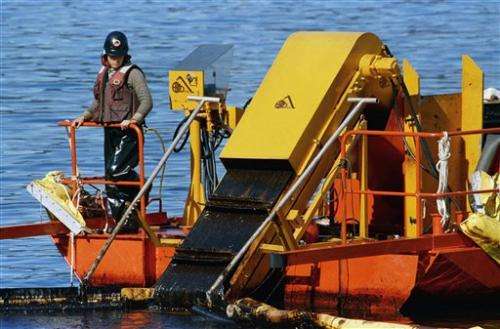
"This is a consequence of North Slope oil development that is rarely mentioned," she said.
Valdez City Manager Doug Griffin said the 800-mile (1,300 kilometer) trans-Alaska pipeline which carries oil from Prudhoe Bay to Valdez and the marine terminal have an enviable environmental record. "But this could be a catastrophic occurrence, so we're concerned," he said.
"Living in Valdez, we've always worried that sometime something like this could happen," he said.
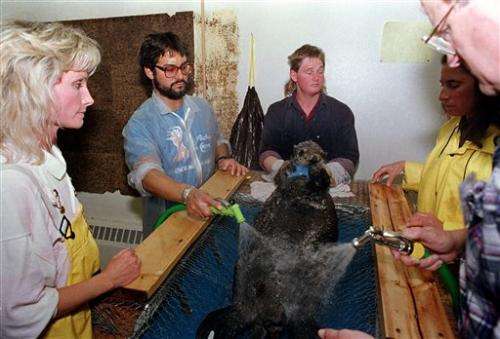
Previously, the largest tanker spill was the Dec. 15, 1976, grounding of the Argo Merchant tanker off the Nantucket shoals, in which 7.6 million gallons (29 million liters) of oil spilled, Golob said.
The largest tanker spill in history was in the July 19, 1979, collision off Tobago of the supertankers Atlantic Empress and Aegean Captain, in which 300,000 tons - more than 80 million gallons (300 million liters) - of oil was lost.
© 2014 The Associated Press. All rights reserved.




















